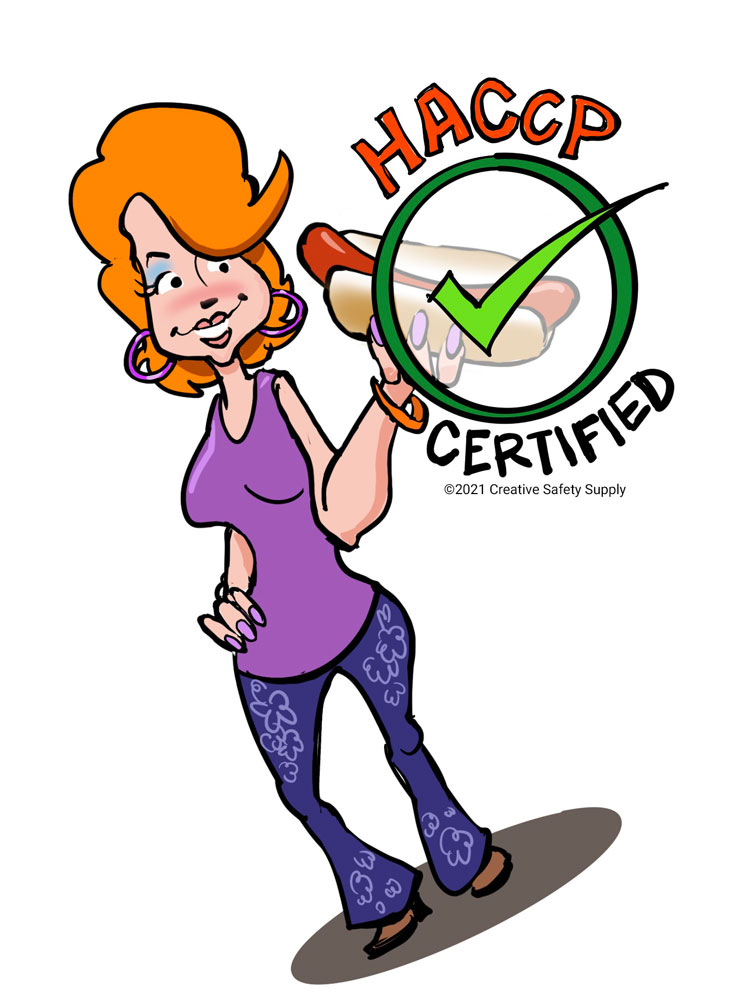
HACCP stands for Hazard Analysis and Critical Control Point. This system is designed to fight safety hazards potentially present in food throughout the manufacturing process. Any company that is involved in manufacturing and processing food has the potential to implement the HACCP system and is highly encouraged to do so. The regulation is used to protect consumers and employees from biological, chemical, and physical hazards that have the possibility of making their way into our food system.
Food is sourced worldwide to supply consumers with produce processed foods that cannot be grown or manufactured locally, which is why the HACCP system is recognized internationally. HACCP mostly focuses on raw material processing, procurement and handling, manufacturing, distribution, and consumption of the product. HACCP also requires other control points such as pest control, traceability, and hygiene training as hazard preventatives.
With the correct training and control points, those hazards are minimized or eliminated altogether.

Principles of HACCP
There are seven main principles to apply to a HACCP system for the improvement of food quality and safety.
- The completion of a hazard analysis
- The identification of critical control points
- The establishment of critical limits
- Monitoring the critical control points
- Establishing corrective action
- Verification
- Record keeping
Furthermore, there are a series of Food Safety Management Systems that offer certification options based on HACCP. These include Safe Quality Food (SFQ), Food Safety Management Certification Scheme (FSSC), British Retail Consortium (BRC), and more. These schemes/certification programs fall under the Global Food Safety Initiative (GFSI). Taking these into consideration gives businesses a lead on the global market, new pathogens to protect against, increasing incidents of food-borne pathogens, and the protection of their brand.
Overall, the implementation of an HACCP system is not the single fix for hazards in the food industry, there are several other schemes like the ones listed above that can also be implemented to create a well-rounded and safe workplace for employees as well as to ensure the safety of customers. Food Safety Management Systems can help businesses minimize contamination, ensure the safety and quality of their products, improve customer satisfaction, and reduce the risk of costly food safety hazards.
Additional HACCP facts:
- HACCP stands for Hazard Analysis and Critical Control Point. It is a systematic approach for food safety hazard identification, assessment of risk, control, and verification activities. It is an international regulatory standard for food businesses and manufacturing plants, serving the purpose of being compliant and offering safe food for the customers. Source: https://www.fda.gov/food/hazard-analysis-critical-control-point-haccp/haccp-principles-application-guidelines
- HACCP was first developed in the 1960s by NASA and the Pillsbury Company to create crumb- and pathogen-free foods for astronauts who will be traveling to space. HACCP was created to address food safety hazards in a food business and prevent the spread of foodborne illnesses. Source: https://www.fooddocs.com/post/history-of-haccp
- The original HACCP program had only three principles: identify and assess hazards, identify critical control points, and establish monitoring procedures. Later, four more principles were added: establish critical limits, establish corrective actions, establish record keeping procedures, and establish verification procedures. These seven principles form the basis of HACCP plans today. Source: https://www.fooddocs.com/post/history-of-haccp
- HACCP is applied to processes throughout every stage of the food supply chain, including production, preparation, packaging and distribution, and is used to manage food safety across many types of food businesses. HACCP can also be integrated with other food safety management systems, such as ISO 22000 and FSSC 22000. Source: https://www.fooddocs.com/post/what-is-haccp
- HACCP is not a one-size-fits-all system. Each food business must develop and implement a HACCP plan that is specific to its products, processes, and hazards. A HACCP plan must be reviewed and updated regularly to reflect any changes in the food business or the food safety regulations. Source: https://safefoodalliance.com/food-safety-resources/what-is-haccp/


